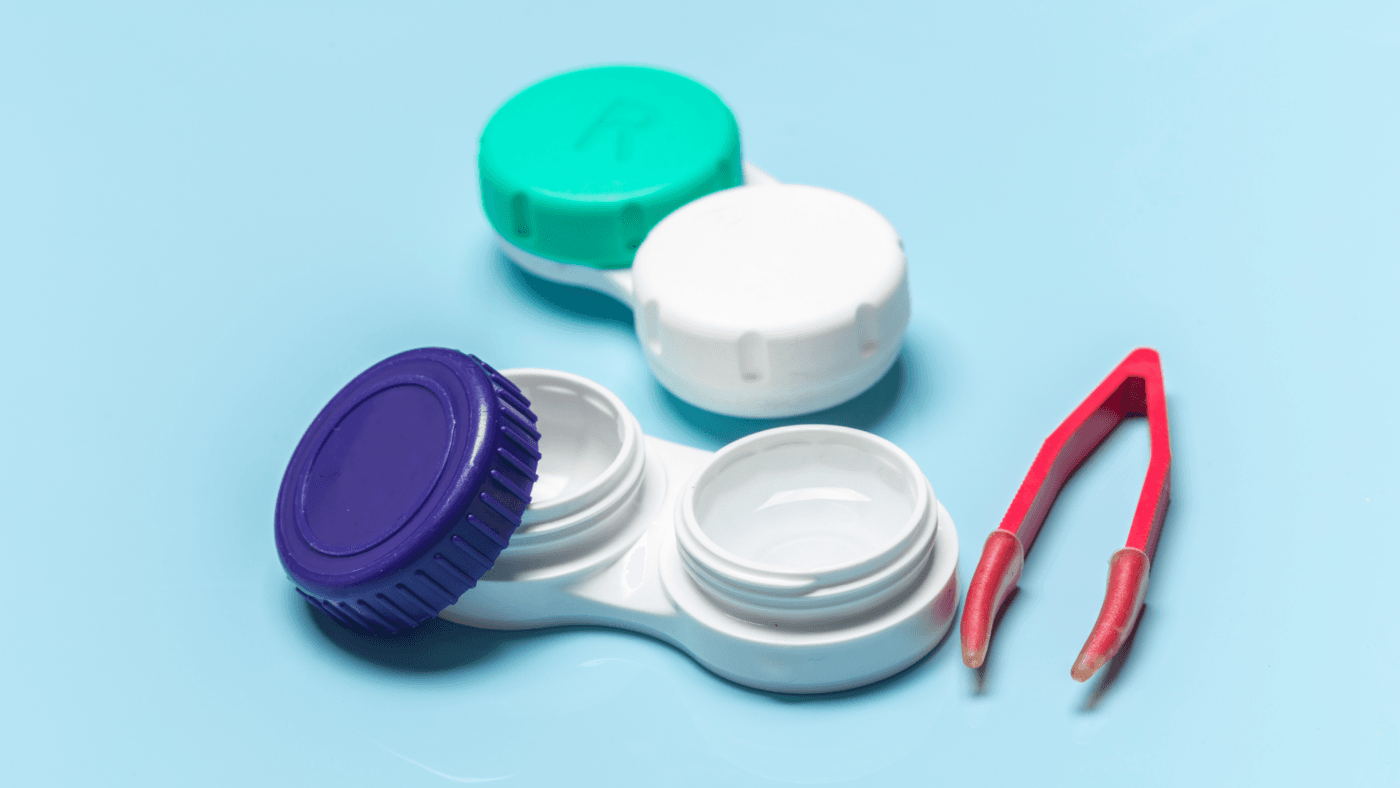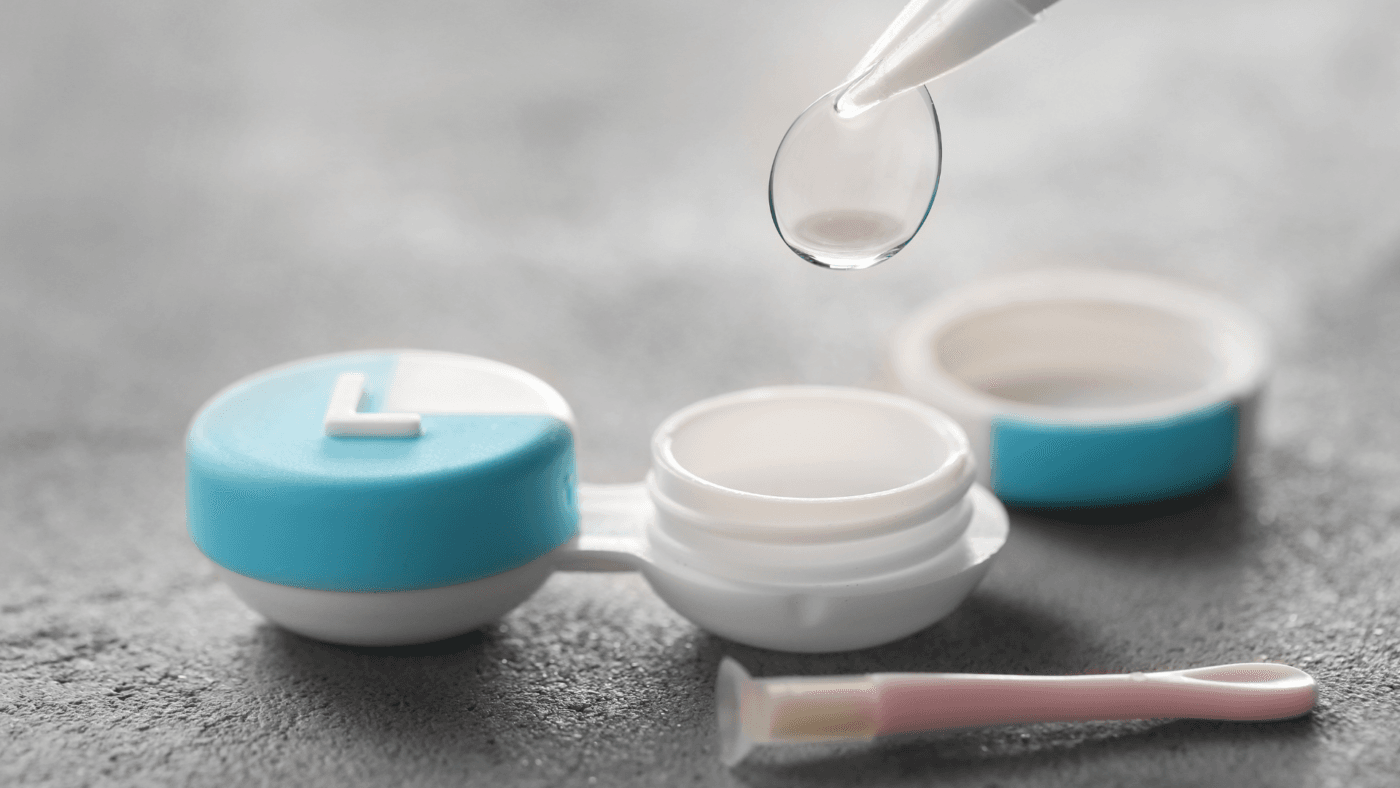Lifestyle
Don’t Neglect Your Lens Case! 4 Crucial Hygiene Tips for Healthy Eyes
Lens case hygiene is an aspect that should be taken seriously as a contact lens user. This is extremely important for your eye health, making sure that there are no complications. Here are 4 crucial tips and good habits when it comes to lens case hygiene.
Lens Case Hygiene #1: Daily Cleaning

Maintaining a clean contact lens case daily is crucial for eye health and preventing infections. Contact lens cases are often overlooked in the daily care routine but they can harbour bacteria and other microorganisms that can lead to serious eye problems if not properly cleaned.
First, always start with clean hands. Wash your hands thoroughly with soap and water and dry them with a lint-free towel before touching your contact lenses or case. This helps to prevent the transfer of dirt and bacteria to your lenses and case.
After removing your contact lenses, discard the old solution from the case. Never reuse or avoid adding on to the old solution as this can lead to contamination. Rinse the empty case with fresh contact lens disinfecting solution. Avoid tap water as it can contain bacteria and other microorganisms that may cause infections.
Acuvue 1 Day Define Fresh
50.91USDAcuvue 1 Day Oasys for Astigmatism Daily Disposable Lenses
70.91USDACUVUE 1-Day Define with Lacreon
50.91USDAcuvue 1-Day Moist Daily Disposable Lenses
42.73USDAcuvue 1-Day Moist for Astigmatism daily disposable lenses
56.36USDAcuvue 1-Day Moist Multifocal Daily Disposable Lenses
69.09USD
Next, gently rub the inside of the case with clean fingers for a few seconds to help remove any debris or film. After rinsing, leave the case open and upside down to air dry on a clean tissue or paper towel. This helps to prevent the growth of bacteria by ensuring the case is completely dry before you use it again.
It is also essential to regularly replace your contact lens case. Aim to get a new case at least every three months or more frequently if you notice any cracks, damage or residue buildup. Damaged cases can harbour bacteria and compromise the sterility of your lens solution.
Additionally, avoid letting the case touch potentially contaminated surfaces such as bathroom sinks. Make sure to store them in a clean and dry place. Follow any specific cleaning instructions provided by the manufacturer of your contact lens solution and case.
By incorporating these steps into your daily routine, you can significantly reduce the risk of eye infections and ensure that your contact lenses remain clean and safe to use. Daily case cleaning is a simple yet vital part of contact lens hygiene that protects your vision and eye health.
Lens Case Hygiene #2: Avoid Tap Water

Avoiding tap water is crucial for maintaining proper hygiene with contact lenses. Tap water, while generally safe for drinking, can harbour microorganisms that pose significant risks to eye health.
Tap water can also contain other bacteria, fungi and parasites. This is harmful when they come into contact with the eyes. Unlike the stomach which has acids and enzymes to kill many of these elements. The eyes lack such robust mechanisms; thus, making them more vulnerable to infections. This is why it is critical to avoid using tap water for rinsing contact lenses or lens cases.
When tap water comes into contact with lens cases, it can introduce these harmful microorganisms directly to the eye. Moreover, the minerals and impurities in tap water can adhere to the surface of the lenses. This may end up causing discomfort, irritation and potential damage to the lenses themselves. For these reasons, it is essential to use only sterile and contact lens-approved solutions for rinsing and storing lenses.
Adopting good hygiene practices is essential for contact lens wearers. Always use fresh contact lens solution to clean and store lenses and rinse lens cases with the same solution. After rinsing the case, let it air dry with the caps off to prevent microbial growth.
Additionally, it is vital to follow the care instructions provided by your eye care professional and the lens and solution manufacturers. Regularly replace contact lens cases every three months or as advised and never attempt to sterilise lenses or cases with tap water or any other non-sterile liquid.
In conclusion, avoiding tap water in contact lens care is a simple yet vital step to protect eye health. By strictly adhering to proper contact lens hygiene practices and using only sterile solutions, users can significantly reduce the risk of eye infections and maintain optimal vision health.
Lens Case Hygiene #3: Regularly Replace Cases

Regular replacement of contact lens cases is a crucial practice for maintaining eye health and preventing infections. Although often overlooked, the lens case plays a vital role in the overall hygiene regimen for contact lens users. Each time lenses are stored, the case can become a breeding ground for bacteria, fungi and other harmful microorganisms. Therefore, adhering to a schedule of frequent case replacement is essential to minimise the risk of eye infections.
You should replace contact lens cases at least every three months. This helps ensure that any potential build-up of contaminants is minimised. Additionally, replacing the case frequently can prevent damage such as cracks or scratches. This prevents bacteria from harbouring and compromising the effectiveness of disinfecting solutions. Damaged cases can also lead to leaks which may result in lenses being improperly stored and more prone to contamination.
Using a new case regularly ensures that the contact lenses are stored in an environment that maximises the efficiency of the disinfecting solution. Old cases may develop residue or deposits that can interfere with the cleaning process. This may reduce the solution’s ability to effectively disinfect the lenses. By switching to a new case, users can maintain the optimal performance of their contact lens solution and enhance the overall hygiene of their lenses.
Furthermore, incorporating regular replacement of contact lens cases into one’s routine is a simple yet significant step toward establishing good lens care habits. It serves as a reminder to be diligent about other aspects of lens hygiene such as using fresh solution daily, cleaning the case properly and practicing good hand hygiene before handling lenses.
In conclusion, the regular replacement of contact lens cases is a key practice for preventing eye infections and ensuring the long-term health and comfort of contact lens wearers. By prioritising this small but important step, users can significantly reduce the risk of complications associated with contact lens use.
Lens Case Hygiene #4: Frequently Check Condition

Inspecting your contact lens case for damage is an essential step in maintaining eye health and preventing infections. Over time, contact lens cases can develop cracks, scratches or other signs of wear that can harbour bacteria or compromise the effectiveness of the disinfecting solution. Regular inspection helps ensure that your lenses remain safe and your eyes stay healthy.
Firstly, make it a habit to visually inspect your contact lens case each time you clean it. Look closely for any cracks which can be an entry point for bacteria. These cracks might not be immediately visible; therefore, good lighting is crucial. If you find any cracks, it is important to replace the case immediately as it can no longer provide a sterile environment for your lenses.
Scratches on the interior surfaces of the lens case can also be an issue. Bacteria can lodge in these scratches and resist cleaning efforts; hence, posing a risk of eye infections. Run your finger gently along the interior surfaces to feel for any rough spots or scratches. If you detect any irregularities, discard the case and use a new one.
The cap of the contact lens case should also be inspected. Ensure that they screw on securely and there are no cracks or damages. A loose or damaged cap can lead to contamination of the solution, making it ineffective at disinfecting your lenses.
It is also worth checking the tightness of the seal around the caps. If the seal is compromised, the solution might evaporate or leak. This may diminish the disinfecting effectiveness and possibly leading to dry or contaminated lenses.
Regularly replacing your contact lens case ideally every three months or sooner if any damage is detected is a simple but effective way to protect your eyes. By incorporating a thorough inspection into your lens care routine, you can help prevent infections and maintain the overall health of your eyes.
Our newest arrivals

We are a company of optometrists & opticians. We focus on providing our customers with their preferred optical products to improve visual acuity and enhance their quality of life. At PopularLens, you will find niche and exclusive brands.
 Free Shipping within SG With Order Over $80
Free Shipping within SG With Order Over $80 Lowest Price Guarantee
Lowest Price Guarantee










